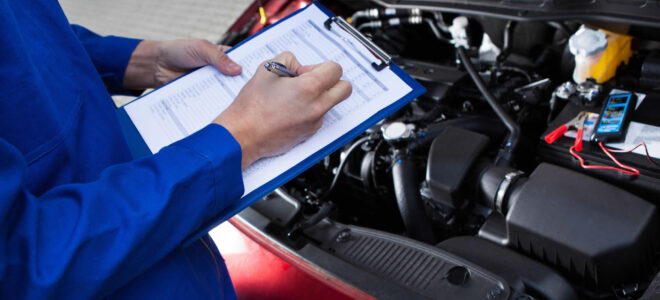
When it comes to maintenance, the automobile world is divided into two types of people. The first section consists of people who are obedient and up-to-date with their MOTs and regular servicing, and the other section is unaware of how things work and when their MOT is due. Naturally, the first section enjoys the benefits of regular car maintenance that gives them better mileage, greater return and resale value, smoother drive, and most importantly, fewer breakdowns.
In this article, we are reaching out to those who are not very keen on getting their car’s maintenance done regularly. What if I tell you that you can enjoy plentiful advantages by knowing some essential maintenance tips that will keep you on the road for a long time without burning a hole in your pocket? You heard me right.
Let’s get on with the list of maintenance that you can do in your garage, and if any issue occurs, there is always a service centre you can drive. Strap on your seatbelts cause’ I am taking you on a fun ride.
Top 6 Essential Maintenance Tips for your car
1. Battery Maintenance
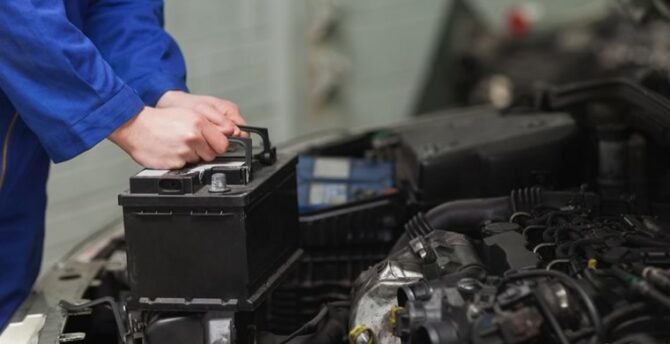
Source: vrelegume.rs
Your car’s battery is designed to be used regularly and may face some degradation when neglected for a long time. With the lockdown upon us, it is good to know a few tips and tricks to keep the battery functioning and charged so you can drive it out of your garage without any issues when needed.
Did you know that battery problem are the #1 cause of breakdowns all the year-round because they are largely neglected by the car owners? If you’re planning to keep your vehicle in the garage for a while, make sure you’re topping it with a trickle charger, also known as a battery maintainer. You can additionally use a battery conditioner if your battery is holding less charge than normal. If you’re not using any of these additives, make sure you’re taking your car for a small drive at least once a week, especially in the winters.
You can also get a battery monitoring device from a local car equipment shop to keep an eye on how things are going. In case of automatic start/stop mechanism, you may experience that your car engine switches off when you’re charging the battery. This is indicative of the fact that your battery is completely charged and you’re good to go.
In case your car is inactive for a long-time, you’ll probably experience a flat battery. This can be checked by jump-starting the car but is now known as a very good way forward as the additional strain can be slightly fatal to sensitive electrics in the machine.
A flat battery is a very common state, and there are ways in which you can avoid it. First things first, I have already mentioned that you should not leave the car in the garage for long stretches. Other tips involve checking the lights after turning the engine off. If you have a ‘lights on’ warning sound, pay attention to it. Additionally, each battery is designed to last for 3 to 5 years so if you’re facing excessive trouble, maybe it is time to change the battery.
2. Tyre Condition – Pressure, Tread & Alignment
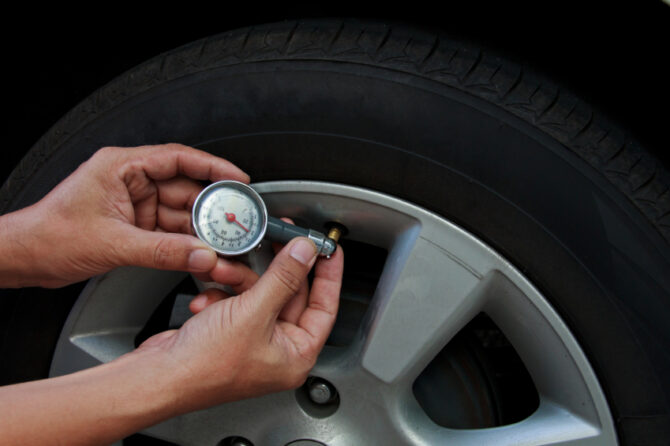
Source: blains.com
Tyres are not given as much importance as they should be getting, seeing that they are the direct contact between the road and the vehicle. A tyre goes through many rough paths, from the constant friction and the unevenness of the road. It is always a good idea to give your tyres a regular check, especially if you’re experiencing any issue with your driving.
If your car is equipped with a Tyre Pressure Monitoring System (TPMS), you will get a warning sign when things are not going as per the standard. You may see this light come on when the car has been parked for long, indicating a check is due. Use a tyre pressure gauge to see if the pressure is within the recommended level which is written on the manual or on the sticker that goes on the inside of your car’s door or the fuel cap. A warning light from the TPMS doesn’t need to be for pressure, it could just be that your tyre needs resetting.
Additionally, you should also keep an eye on the tread of tyres, and make sure they are well within the legal limits. The legal minimum in the UK is 1.6mm but make sure you’re changing them when they reach 2-3mm as the tyres start to become less effective and are unable to stay on the ground. This possesses a threat to everyone in the car and on the road.
Another place where you need to be attentive to tyres is the alignment. Make sure you visit the service centre regularly to get your tyres rotated, aligned, and balanced according to the mileage that is originally stated in the manual.
3. Filter Change – The most basic maintenance
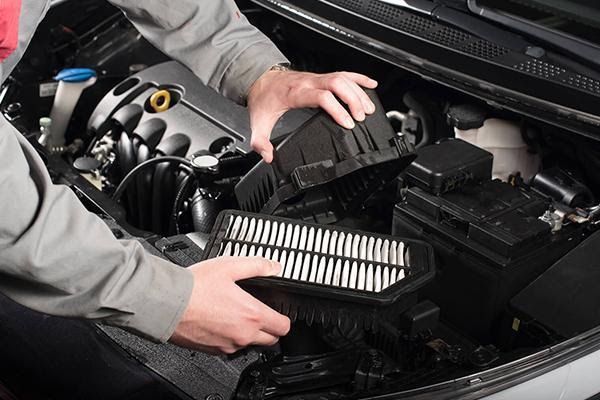
There are many filters equipped in your vehicle that helps you have that smooth drive that you love very much. Essentially, after a point of time, they get clogged, demanding to be changed for efficient functioning.
Cabin Filters are responsible for the clean and fresh air that enters through the heating and air conditioner system. Any clogging or inefficient working of these filters will lead to unpleasant air in the cabin. This could additionally be problematic for when you need to use the air-conditioner or the de-fogging system for better visibility.
Another very important filter is the air filter that prevents any dust, debris, unknown particles, insects, sands, etc, reaching the engine. It also helps to maintain a good combination of air and fuel that aids in optimal car performance.
In the list of filters that need regular maintenance, there are also oil and fuel filters. The oil filter is present to help with the perennial flow of oil and to filter out any unknown particle that may find their way into the motor oil.
On the other hand, fuel filters essentially work to remove dust, rust, and grit present in the fuel. This plays an essential role in enhancing the performance and durability of your engine.
If you’re not well-known with the complications involved with changing the filters, you can always drive down to the nearest car repair garage and get some help with the experienced staff.
4. Fluid Check
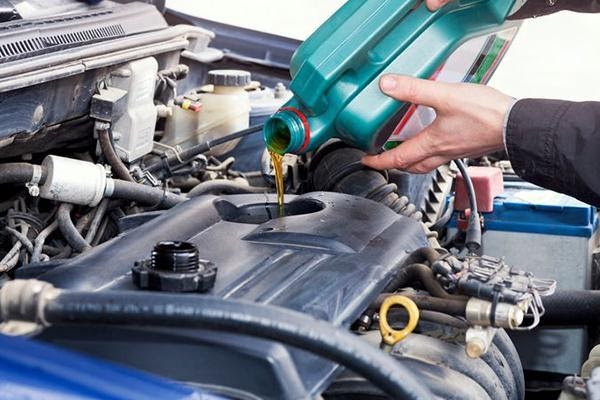
One of the easiest ways to keep your car in good shape is to keep a check on the car fluids, topping or changing them when needed. There are six essential fluids that you need to keep your eye on to experience fewer breakdowns and better overall efficiency.
The first one is the engine oil, that lubricates all the working parts of the main system, ensuring everything is working fine without any friction. To check, use the dipstick attached to the front of the engine and wipe it before entering it into the oil tank. The oil level should be above the safe level marked on the dipstick.
Radiator fuel is another very important fluid that you should check if you don’t want to be stranded in the middle of the road due to an overheated engine. Make sure your car is standing still before opening the cap of the radiator fluid. Take a glance, and if the fluid is not visible, you need to add more.
Transmission fluid is also an essential fluid of the car and can be checked in the same manner engine oil is done. Other essential fluids include power steering fluid, brake fluid, air conditioning coolant, and washer fluids.
5. Service Schedule
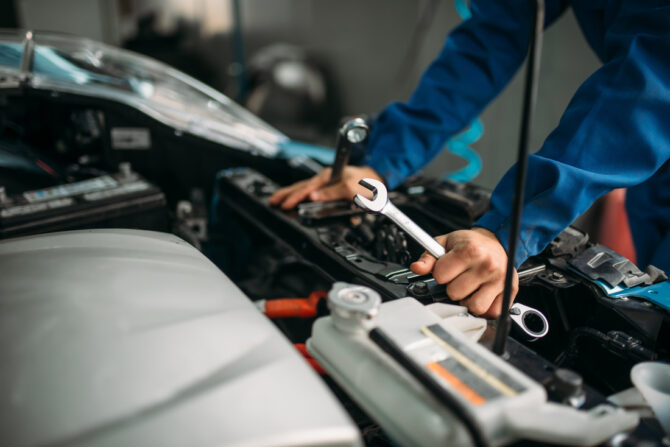
Source: jd.id
Keeping your car in a better shape and making it last longer has a lot to do with servicing. There are a few steps that you can take at home to maintain it better, but at the end of the day, professional opinion and mechanics work is needed to add to the longevity of your vehicle.
This does not mean that you rush to the garage at every inconvenience, but it is always a good idea to have a regular service schedule that is not intervened or interrupted in any case. You can opt for the full car service that is scheduled at every 12 months or 12,000 miles, whichever comes first. With a robust checklist that involves every major and essential part of the car, it is a good way to keep up with the health and performance of your vehicle. To know more about full car service, click here.
Additionally, there is also interim and major service which can be opted for every 6 months or 24 months, respectively. The number of checks varies as per the time, with the major service offering more than the interim one.
It is a very basic thought to get your car service scheduled regularly but it is astonishing to note how many people ignore this little part. Sticking to a car maintenance schedule can eventually help you save big on repair bills and unexpected breakdowns.
6. Driving Method

Source: pexels.com
Driver monitoring software keeps an eye on the driver. It will detect things like drowsiness and head position. Others allow for the use of gestures to control features on the car. If you have noticed any issue with these features, then it is needed to supplant the machine, you can arrange the enhanced one accessible on npcautomotive.com. Aside from this, they can assist you in recognizing the affected piece of the vehicle.
It is not rocket science to know that how you treat your car will have an effect on how long it will last. In fact, how you drive will also decide how frequently you need to visit the maintenance centre.
The more aware way of driving is known as having mechanical sympathy. The idea is to use the controls of the car, understanding how delicately or cautiously you need to use it. Driving your car as smoothly as possible will also help to enhance fuel efficiency. Being kinder to your car will also make it more adaptable to the environment with lesser emissions and fuel burn.
It is also a good practice to avoid the potholes as they can have a serious effect on your suspension, exhaust, and the tyres.
This brings us to the end of our maintenance tips. Hope you found this informative and interesting. Comment below with your doubts and questions, and we will get back to you.



